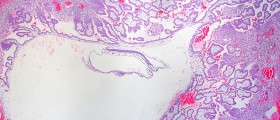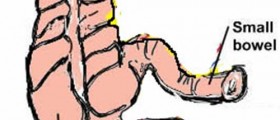
Pelvic inflammatory disease (PID) is inflammation that only occurs in women and affects the upper reproductive tract including the uterus, ovaries and fallopian tubes. In majority of cases inflammation remains located to the fallopian tubes (salpingitis). Pelvic inflammatory disease can be one of complications of different sexually transmitted diseases and may develop as a consequence of bacterial vaginosis. The infection can be also introduced to the particular organs during many procedures gynecologists perform.
In order to fight the infection, the body initiates inflammation and this process ends up with scarring. Inflammation is basically transitory although it may linger or repeat and cause severe scarring associated with long-term complications.
Pelvic Inflammatory Disease Clinical Characteristics
The condition can be asymptomatic. This is the worst case scenario since this way patients do not know they are ill and the disease causes damage to organs that can lead to irreversible complications.
However, many women develop some symptoms due to inflammation. Most of them complain about pain in the lower abdomen and pelvis, have irregular periods and experience pain during sexual intercourse or urination. The pain is sometimes located in the lower back. Certain number of women have excess vaginal discharge with a foul odor. Additional symptoms include fever, exhaustion, diarrhea and vomiting.
Pelvic Inflammatory Disease Complications
There are different complications associated with PID, particularly if the condition is left untreated.
In acute infection microorganisms may cause abscess of different reproductive organs such as fallopian tubes, ovaries or even form inside the pelvis. This pus collection must be treated immediately and requires surgical removal.
Another quite common complication of pelvic inflammatory disease is ectopic pregnancy. The explanation for this problem is rather simple. Namely, prolonged inflammation inside the pelvis may cause scarring of different organs, including fallopian tubes. This may cause problems with release and transfer of the egg and problems with fertilization and further implantation. In stead of being implanted into the uterus, fertilized egg may remain inside the fallopian tube, implant inside the organ and cause potential life-threatening bleeding.
Chronic Pelvic pain is another potential complication of PID. It results from excessive scarring and malformation of pelvic organs associated with this scarring.Pelvic Inflammatory Disease and Fertility
The most severe complications and quite devastating for all women who want to conceive and dream of having many children is infertility.
It is estimated that approximately 15% of all women suffering from pelvic inflammatory disease have become infertile just because of this inflammation. Scar tissue inside the pelvis may affect ovaries and prevent ovulation, interfere in fertilization by affecting the fallopian tubes and finally prevent implantation in the uterus.
This drives to conclusion that prevention against pelvis inflammatory disease and its timely and adequate treatment may be safety measures that preserve fertility in women.

















Your thoughts on this
Loading...